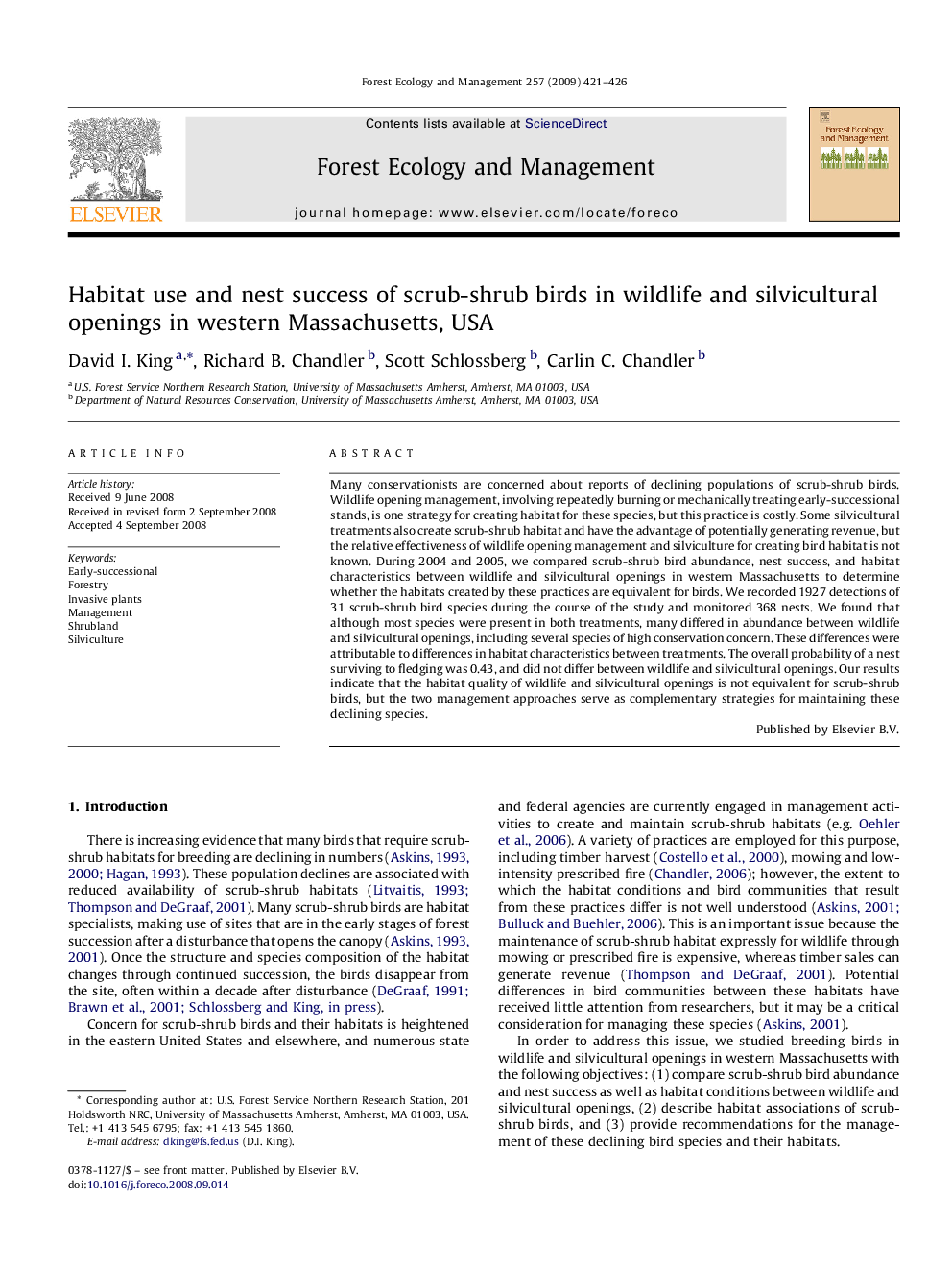| Article ID | Journal | Published Year | Pages | File Type |
|---|---|---|---|---|
| 89263 | Forest Ecology and Management | 2009 | 6 Pages |
Many conservationists are concerned about reports of declining populations of scrub-shrub birds. Wildlife opening management, involving repeatedly burning or mechanically treating early-successional stands, is one strategy for creating habitat for these species, but this practice is costly. Some silvicultural treatments also create scrub-shrub habitat and have the advantage of potentially generating revenue, but the relative effectiveness of wildlife opening management and silviculture for creating bird habitat is not known. During 2004 and 2005, we compared scrub-shrub bird abundance, nest success, and habitat characteristics between wildlife and silvicultural openings in western Massachusetts to determine whether the habitats created by these practices are equivalent for birds. We recorded 1927 detections of 31 scrub-shrub bird species during the course of the study and monitored 368 nests. We found that although most species were present in both treatments, many differed in abundance between wildlife and silvicultural openings, including several species of high conservation concern. These differences were attributable to differences in habitat characteristics between treatments. The overall probability of a nest surviving to fledging was 0.43, and did not differ between wildlife and silvicultural openings. Our results indicate that the habitat quality of wildlife and silvicultural openings is not equivalent for scrub-shrub birds, but the two management approaches serve as complementary strategies for maintaining these declining species.
